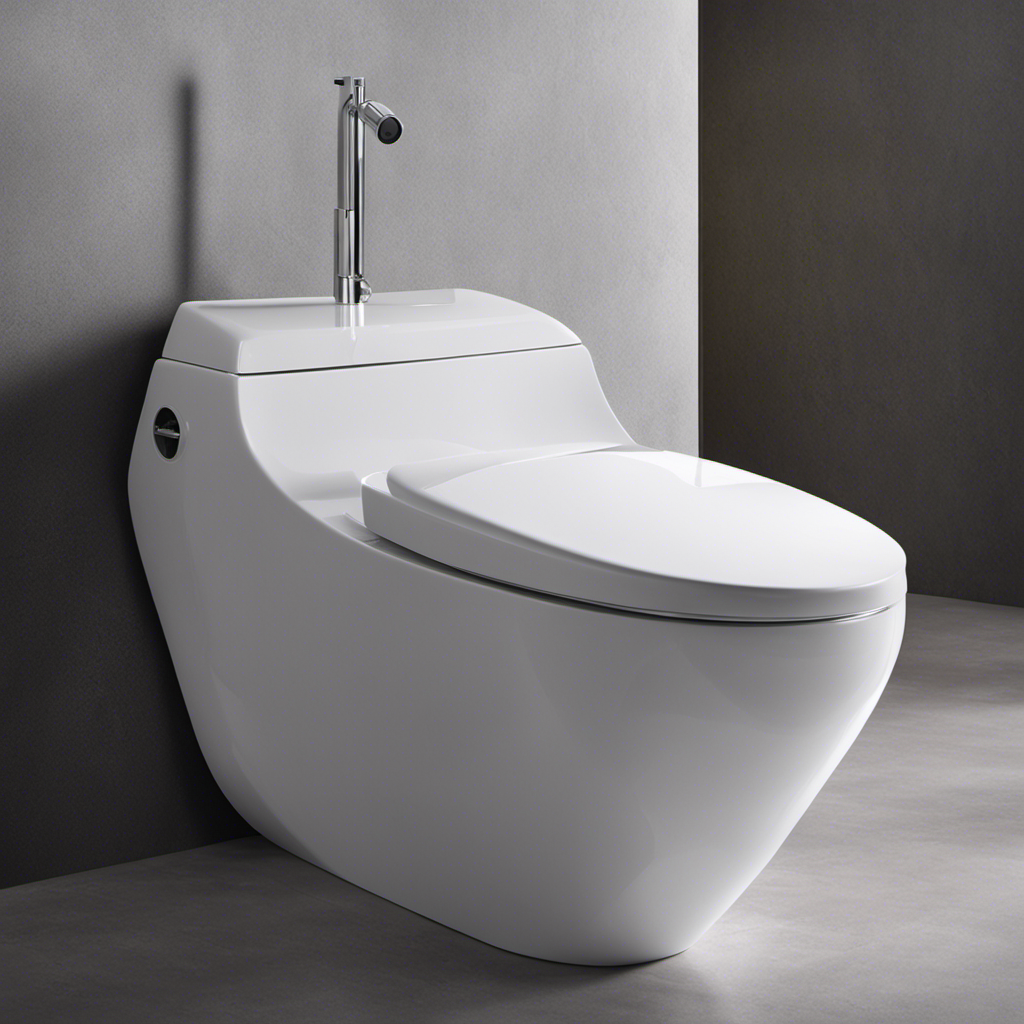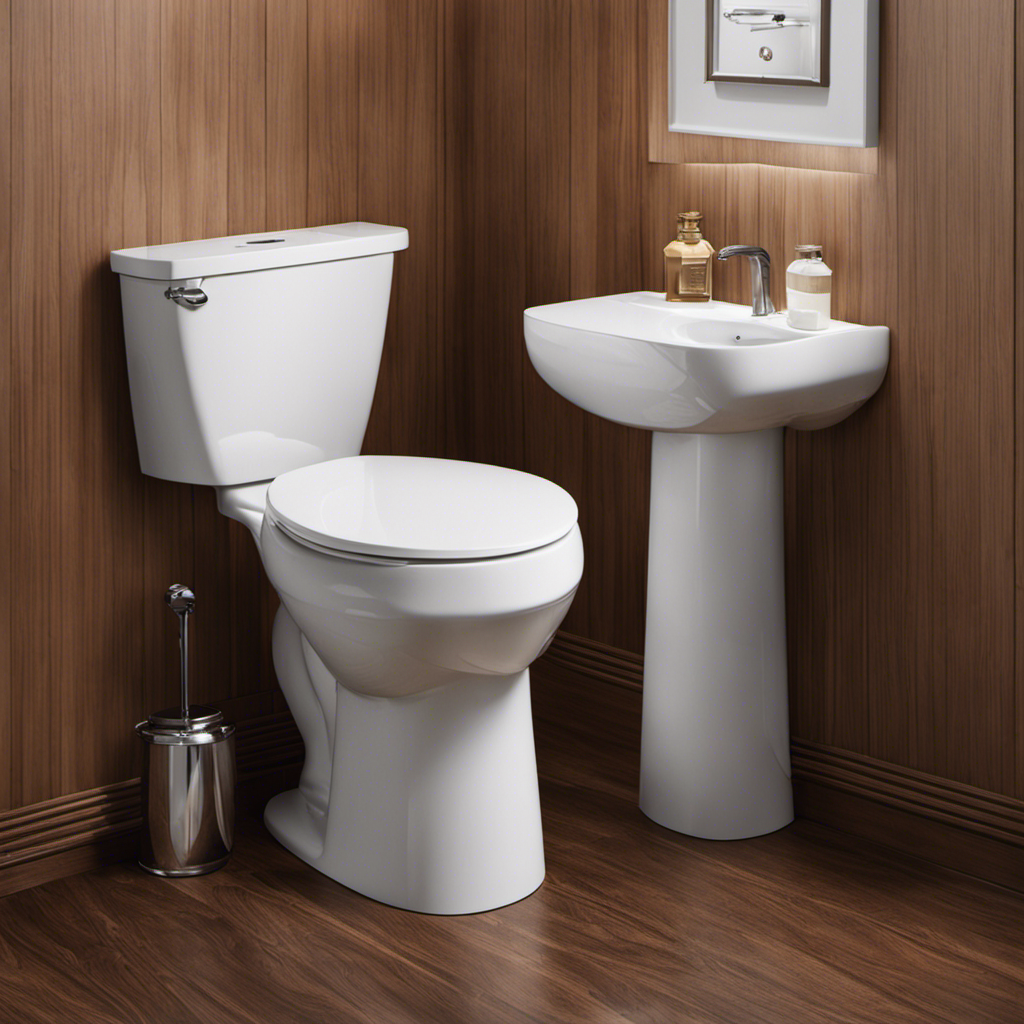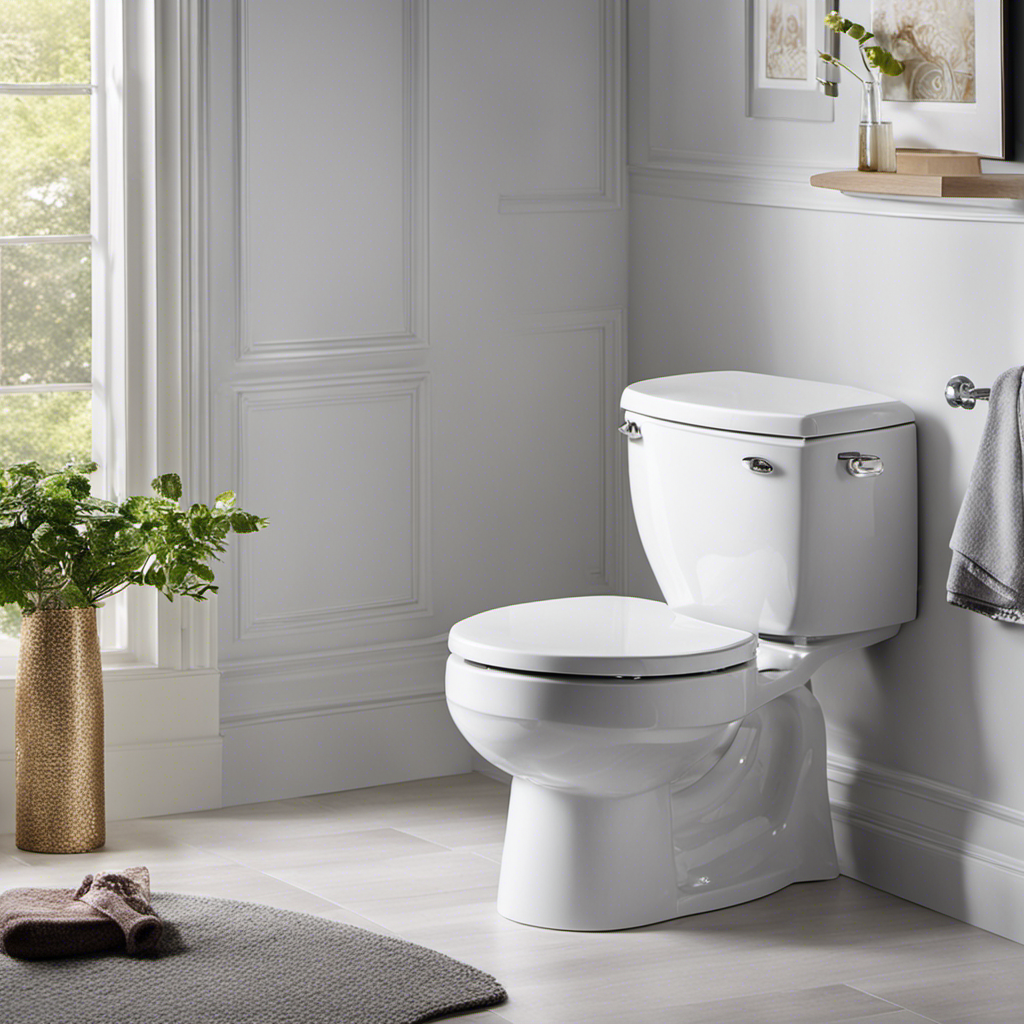As an avid environmentalist, I’ve always been intrigued by the fascinating functionality of compost toilets. Today, I’ll be unraveling the secrets behind how these innovative systems work.
From the beneficial impact on the environment to the intricate components that make it all possible, we’ll delve into the technicalities of composting in a compost toilet.
So, if you’re ready to embark on a scientific journey and discover the inner workings of this eco-friendly marvel, let’s get started!
Key Takeaways
- Compost toilets significantly reduce water consumption and save thousands of gallons of water per year.
- They contribute to the production of nutrient-rich soil by effectively converting waste into usable compost.
- The process of composting in a compost toilet involves natural decomposition, aerobic bacteria, thermophilic stage, mesophilic bacteria, fungi, and microorganisms.
- Maintaining and managing a compost toilet involves odor control, proper waste disposal, regular monitoring of moisture levels, and periodically turning the compost pile.
Benefits of Using a Compost Toilet
Using a compost toilet can significantly reduce water consumption and eliminate the need for harmful chemical cleaners. The advantages of using a compost toilet are numerous, especially when considering the environmental impact.
Firstly, compost toilets require little to no water for flushing, which can save thousands of gallons of water per year. This is particularly beneficial in regions experiencing water scarcity or facing water pollution issues.
Additionally, compost toilets help to reduce the amount of waste entering sewage systems, thereby lowering the energy and resources needed for wastewater treatment. By converting human waste into compost, these toilets also contribute to the production of nutrient-rich soil, promoting sustainable agriculture and reducing the need for synthetic fertilizers.
Overall, compost toilets offer a sustainable and eco-friendly solution for waste management.
Components of a Compost Toilet System
To understand how a compost toilet system functions, you’ll need to identify the key components involved.
-
Composting Chamber: This is where the magic happens. It holds the waste and provides the ideal conditions for the composting process to occur.
-
Ventilation System: Proper airflow is crucial for the composting process. The ventilation system ensures that oxygen is available for the aerobic bacteria to break down the waste.
-
Separation Mechanism: Compost toilets often have a separation mechanism that separates urine from solid waste. This helps in preventing odor and allows for better composting.
-
Composting Materials: To facilitate the composting process, composting materials like sawdust or coconut coir are added to the solid waste. These materials provide carbon, which balances the nitrogen-rich waste and helps in decomposition.
With these components in place, the compost toilet system can effectively convert waste into usable compost.
Now let’s delve into the process of composting in a compost toilet.
The Process of Composting in a Compost Toilet
Once the waste is deposited in the composting chamber, it undergoes a natural decomposition process facilitated by the ideal conditions provided.
The composting process in a compost toilet involves several stages of decomposition. Initially, aerobic bacteria begin breaking down the organic matter, consuming oxygen and producing heat. This thermophilic stage is crucial for killing off harmful pathogens and weed seeds.
As the temperature cools down, mesophilic bacteria take over, continuing the decomposition process. They break down complex organic compounds into simpler substances.
Finally, during the maturation stage, fungi and other microorganisms further break down the remaining organic matter, resulting in a stable and nutrient-rich compost.
Throughout these decomposition stages, the composting chamber must maintain proper moisture levels, aeration, and a carbon-to-nitrogen ratio to ensure efficient decomposition.
This scientific process is essential for transforming waste into valuable compost for sustainable agriculture and soil enrichment.
Maintaining and Managing a Compost Toilet
Now that you understand the composting process, it’s important to know how to properly maintain and manage your compost toilet. To ensure effective operation and minimize any potential issues, follow these steps:
-
Odor Control: Use a carbon-rich material like peat moss or sawdust to cover each new deposit, as this helps absorb odors and maintain a healthy balance of carbon and nitrogen in the compost pile.
-
Waste Disposal: Only deposit appropriate materials into the compost toilet, such as toilet paper and organic waste. Avoid flushing non-biodegradable items, chemicals, or oils, as they can disrupt the composting process.
-
Regular Monitoring: Keep an eye on the moisture levels in the compost pile. It should be moist, but not overly wet. Adjust the moisture content by adding water or dry materials as needed.
-
Turning the Pile: Periodically turn the compost pile to promote aeration and ensure even decomposition. This helps speed up the composting process and prevents any potential odor buildup.
By following these guidelines, you can effectively manage your compost toilet and maintain a healthy and odor-free environment.
Now, let’s explore some tips for using a compost toilet effectively.
Tips for Using a Compost Toilet Effectively
For effective use of a compost toilet, remember to cover each new deposit with a carbon-rich material like peat moss or sawdust to control odors and maintain a proper balance in the compost pile. This is crucial in ensuring effective cleaning and odor control.
The carbon-rich material acts as a cover, preventing odors from escaping and promoting the decomposition process. Additionally, it helps to maintain the ideal moisture level in the compost pile. Regularly adding the carbon-rich material not only controls odors but also aids in breaking down the waste into nutrient-rich compost.
It is important to note that the compost pile should be regularly turned and monitored to ensure proper decomposition and avoid any issues with odor. By following these tips, the compost toilet can provide a hygienic and environmentally friendly alternative to traditional toilets.
Frequently Asked Questions
How Much Space Is Required to Install a Compost Toilet?
Compost toilet space requirements depend on various factors, such as the type of composting system and local regulations. Factors to consider include the size of the composting chamber, ventilation needs, and clearance around the toilet for maintenance.
Can a Compost Toilet Be Used in All Climates?
A compost toilet can be used in all climates, but its composting efficiency may vary. Factors such as temperature and humidity affect the decomposition process. It is important to consider the environmental impact of composting in different climates.
Are Compost Toilets Suitable for Large Families or High-Traffic Areas?
In high-traffic areas or large families, compost toilets require regular maintenance to ensure proper functioning and odor control. This involves managing the composting process and implementing strategies to minimize any unpleasant smells.
What Are the Potential Health Risks Associated With Using a Compost Toilet?
The potential health risks associated with using a compost toilet include potential odor and a potential impact on local ecosystems. These risks should be carefully considered when determining the suitability of compost toilets for different environments.
How Does the Maintenance of a Compost Toilet Differ From a Traditional Flush Toilet?
The maintenance requirements of a compost toilet differ from a traditional flush toilet. It involves regularly adding organic material, monitoring moisture levels, and promoting decomposition. This reduces water usage and the environmental impact of waste disposal.
Conclusion
In conclusion, compost toilets are an innovative and environmentally-friendly solution for waste management. These toilets effectively turn human waste into nutrient-rich compost by harnessing the power of natural decomposition. The components of a compost toilet system work together seamlessly to facilitate the composting process, ensuring proper breakdown and odor control.
With proper maintenance and management, compost toilets can be a sustainable and efficient alternative to traditional flushing toilets. So, why not embrace this eco-friendly option and imagine a world where our waste becomes a valuable resource for the earth?










